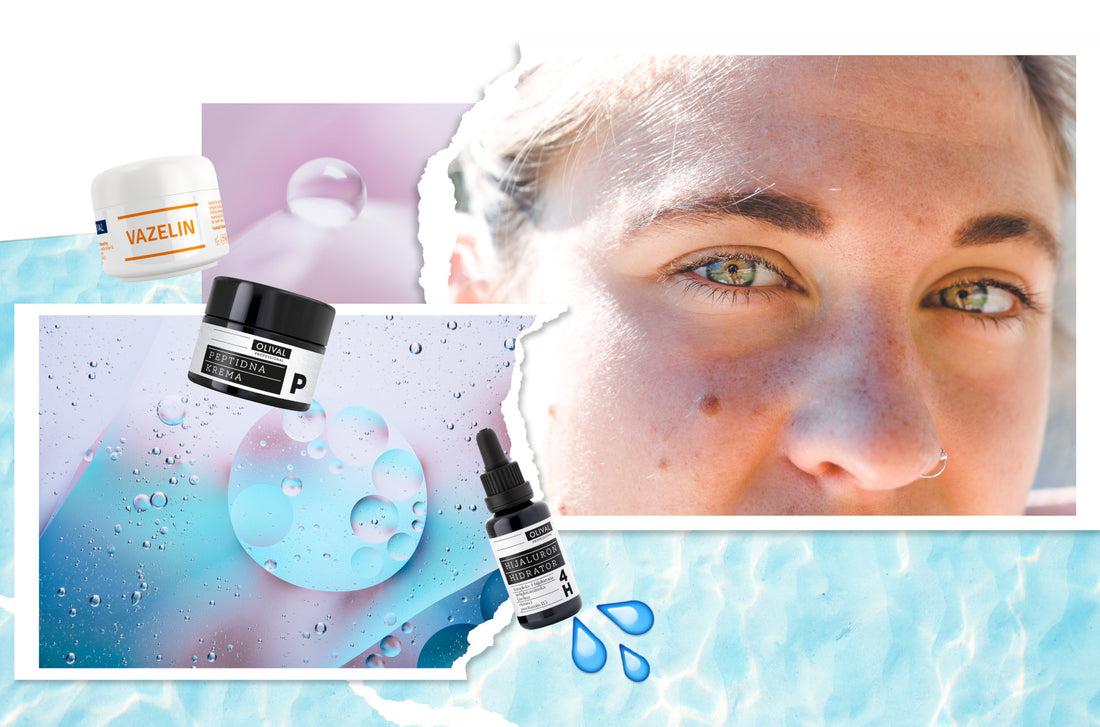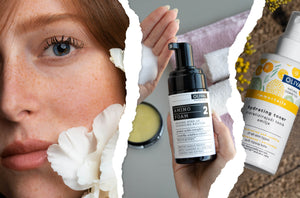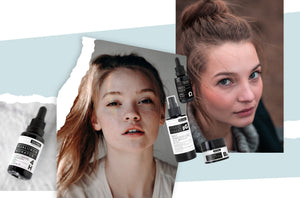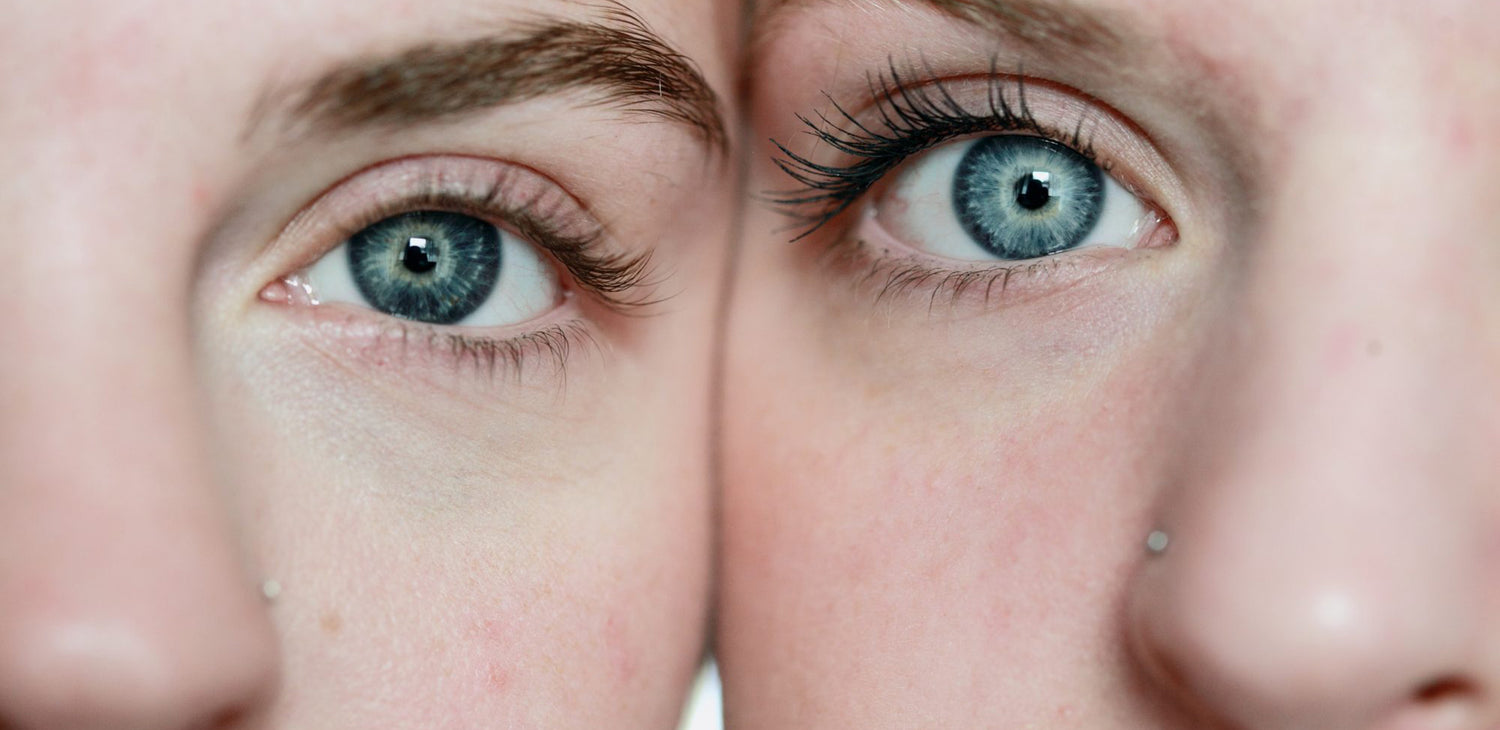A somewhat strange abbreviation and even more complex phrase is very often "slipped" when it comes to cosmetics. Why is TEWL important? Just as every skin needs hydration and (occlusive) care, every skin is to a greater or lesser extent affected by moisture loss. Below we present what exactly transepidermal moisture loss means and how we can influence it.
Our skin, in the simplest terms, is made up of three layers - epidermis, dermis and hypodermis.
The epidermis or the outer layer of the skin is divided into five additional layers, from the stratum basale (foundational layer) to the stratum corneum (surface layer) which also forms the hydrolipidic barrier, and this is also the skin we see and perceive. The name corneum comes from corneocytes, hard keratinous clusters of cells that, along with the lipids present, protect the skin from external influences such as temperature changes, physical injuries and microbiological infections. Our skin is waterproof and "coated" with a protective protein layer, but it is not (completely) impermeable. Just as it can absorb different textures of cosmetic products from the outside, it can evaporate moisture from the inside and this is actually TEWL (transepidermal water loss).
Transepidermal moisture loss is a physiological process that takes place in the layers of our skin. When water passes from the dermis to the epidermis and evaporates into the atmosphere from the very surface of the skin, the so-called TEWL.
It is not for nothing that it is said that properly cared for skin is healthy skin.
Loss of moisture, especially when it is long-lasting, affects a whole range of phenomena on the skin, mostly visual ones such as dehydration wrinkles and fine lines and a tired lifeless complexion without shine. It should be emphasized that transepidermal moisture loss occurs naturally on every skin, but the extent of this process depends on many factors - from how much moisture the skin naturally contains to information about skin health and the preservation of the hydrolipidic barrier) to the cleaning routine and selection of care products. Transepidermal moisture loss can be alleviated by applying care immediately after cleansing the face, but also by combining a high-quality moisturizer (humectant) and lipid (occlusive).

Remember, less is more - a little with hyaluronic acid!
In the desire to bring our skin to the desired level of hydration overnight, it happens that too many products with the same purpose and similar composition are found in the routine. It is a common mistake to apply a gel-cream with hyaluronic acid on top of a serum with hyaluronic acid, without a sufficient occlusive product that will keep that great moisture in the skin. In addition to irritation, this also risks significant TEWL, which is more pronounced during the winter, when we stay in heated spaces and when the humidity level in the air is very low. The result is dehydration and exactly the opposite effect from the desired one. When you introduce hyaluronic acid, let it be part of a serum product such as Hyaluron hydrator 4H , while the cream formulation should be richer in emollients, i.e. lipids. A good example is Peptide cream P , rich in glycerin, but also caprylic triglycerides and almond and macadamia oils. An oil or an oil complex such as Omega Elixir is an even better choice for dry skin types since it will retain moisture extremely well, and for this purpose you can also use ordinary petroleum jelly.
Despite all the information and myths circulating on the Internet, petroleum jelly is a safe and useful ingredient in the care routine. With a very low irritant and allergenic potential and a wide range of uses, it is found in many cosmetic products on the European market, which is extremely strictly regulated and as such does not leave much room for speculation. As a mixture of mineral oils and waxes, petrolatum intended for use in cosmetics goes through a series of purification procedures to ensure its quality.
One of the arguments when talking about the harmfulness of Vaseline is that it does not nourish the skin at all - and this is true.
However, that is not its purpose. Due to its texture and properties, it is very unchanging and stable, it can be combined in the same routine with all ingredients and products, and it is important above all for the reason that in the last step of care it will almost completely protect the skin from moisture loss, as well as pathogens in case of inflammatory processes .





